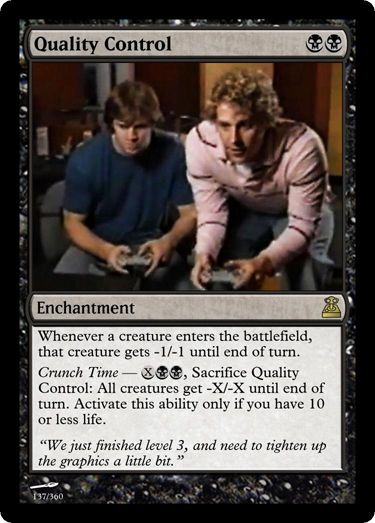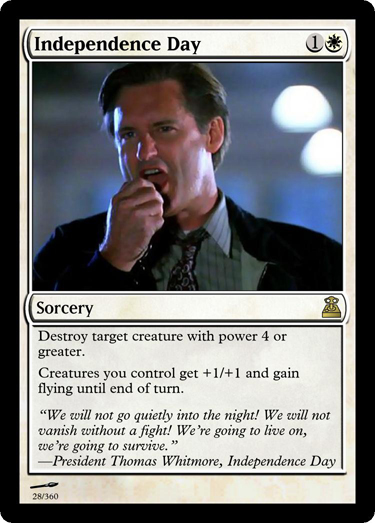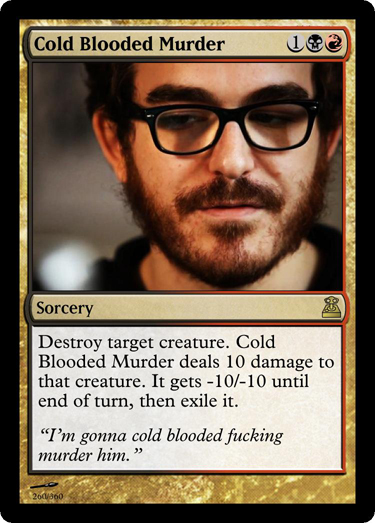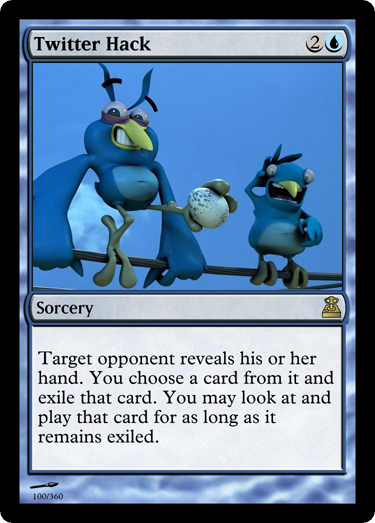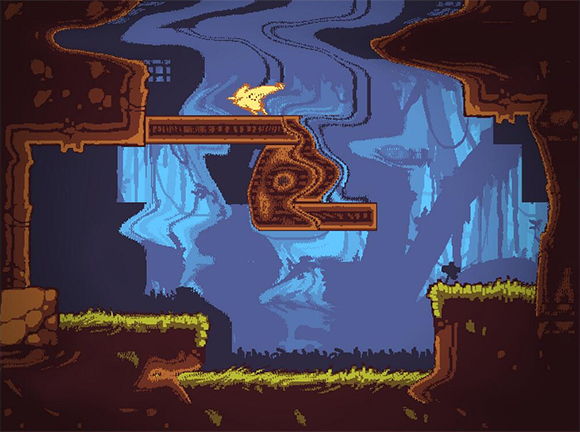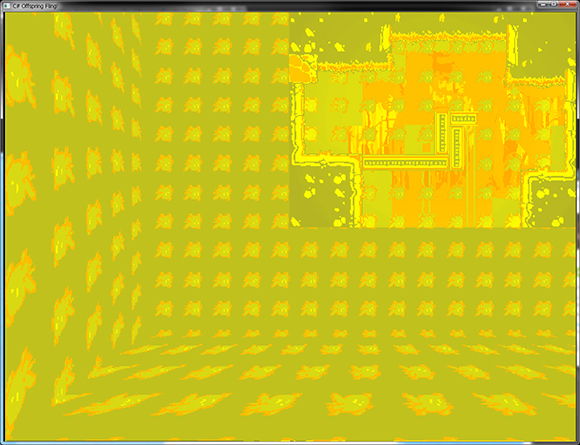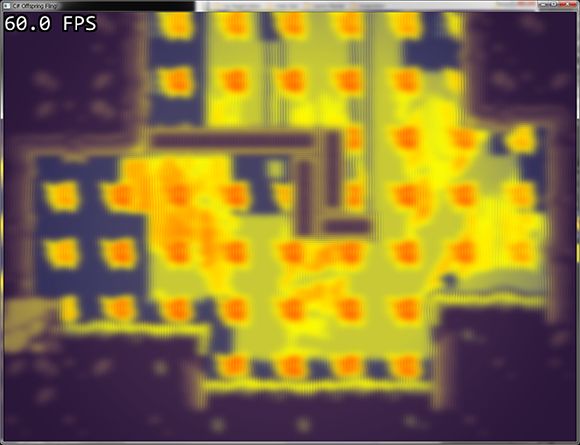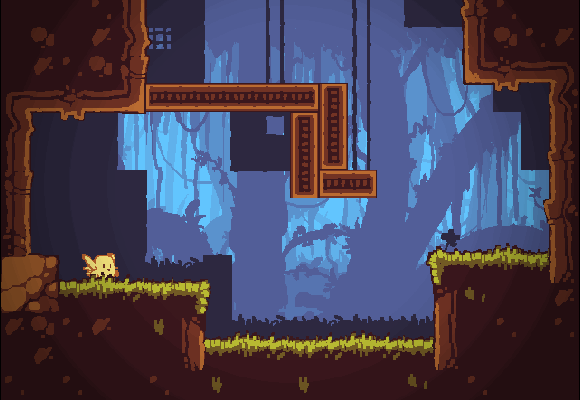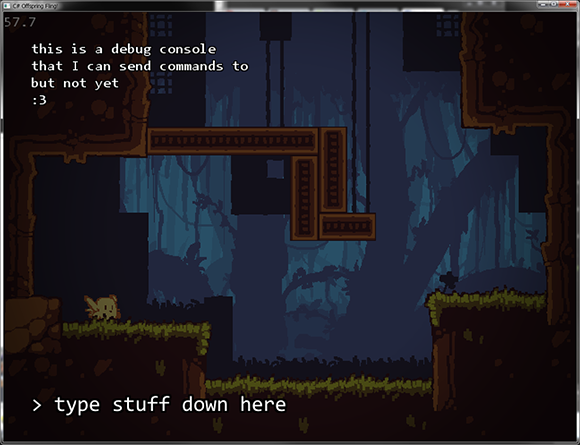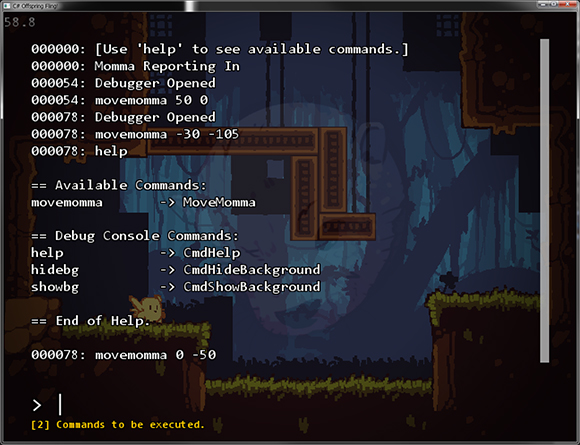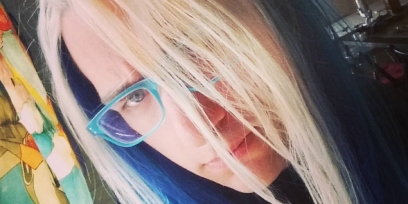Dev Log: Boring Code Stuff
With the release of Otter I got a brand new handful of bug reports and other things to fix, so I've been busy churning away at those over the past couple of days.
My collision code for AABB test was off by just one pixel (because I guess I needed to use >= and <= instead of just > and <, oops) so I got that fixed up. I also fixed some other bizarre bugs in the collision code that was mostly caused by me just using the wrong variable for some things.
I recently changed the input components around to allow for external sources of input. This is a pretty cool feature that I personally like a lot because it goes along with one of my methods for making computer controlled entities, like enemies or characters or whatever.
As an example, I like to code all of my enemies in games as potential players... meaning that they control themselves with input from a controller just like a player would. Instead of just moving left and right by changing their speeds, an enemy will push left and push right on its movement axis, and then other code will read that input and change the speed. For some reason I like doing this a lot because it feels like the enemies are operating under the same rules as the player -- and if I ever wanted to give players control over specific enemies or characters I could easily do that!
Even Dinobaus from Offspring Fling is internally controlled by a fake controller that is being fed input by his "AI."
This also allows for people to potentially record input over time, and then play it back by taking external control of the state of Buttons and Axes, a feature that is often cool for replays, or attract modes.
The one bug I'm currently stumped on is that there is a crash when you close a game in Windows 8 in Debug mode when using an Intel HD graphics card. A very specific weird thing that I have to hunt down... and I have no idea what could be causing it! The joys of programming.
My collision code for AABB test was off by just one pixel (because I guess I needed to use >= and <= instead of just > and <, oops) so I got that fixed up. I also fixed some other bizarre bugs in the collision code that was mostly caused by me just using the wrong variable for some things.
I recently changed the input components around to allow for external sources of input. This is a pretty cool feature that I personally like a lot because it goes along with one of my methods for making computer controlled entities, like enemies or characters or whatever.
As an example, I like to code all of my enemies in games as potential players... meaning that they control themselves with input from a controller just like a player would. Instead of just moving left and right by changing their speeds, an enemy will push left and push right on its movement axis, and then other code will read that input and change the speed. For some reason I like doing this a lot because it feels like the enemies are operating under the same rules as the player -- and if I ever wanted to give players control over specific enemies or characters I could easily do that!
Even Dinobaus from Offspring Fling is internally controlled by a fake controller that is being fed input by his "AI."
This also allows for people to potentially record input over time, and then play it back by taking external control of the state of Buttons and Axes, a feature that is often cool for replays, or attract modes.
The one bug I'm currently stumped on is that there is a crash when you close a game in Windows 8 in Debug mode when using an Intel HD graphics card. A very specific weird thing that I have to hunt down... and I have no idea what could be causing it! The joys of programming.
2 Comments









